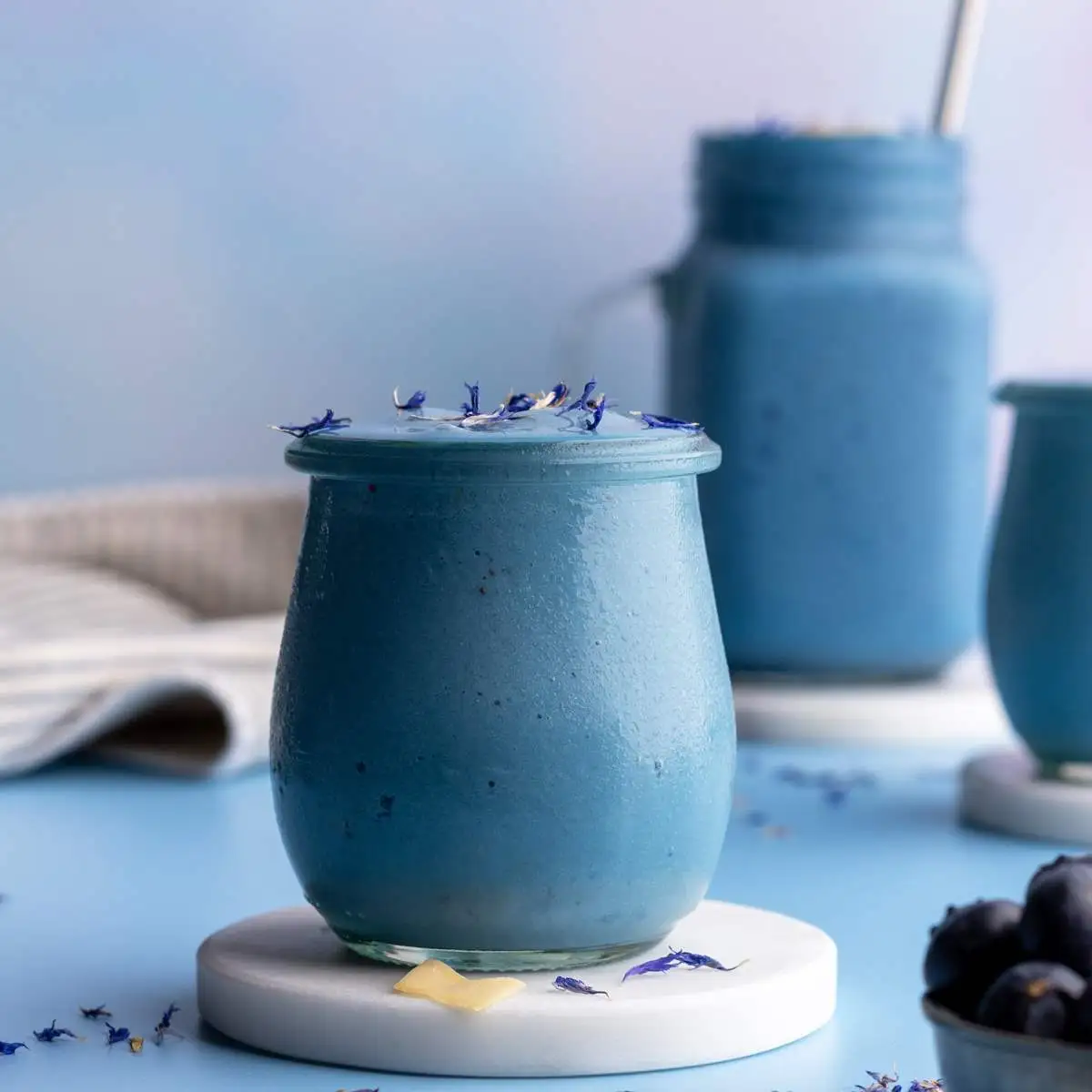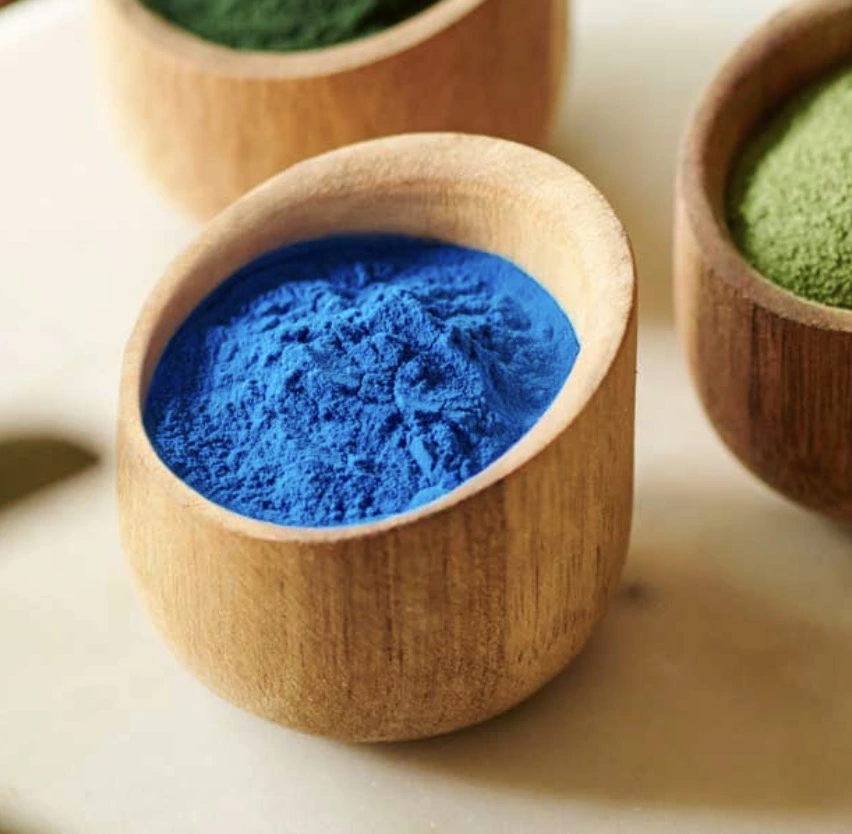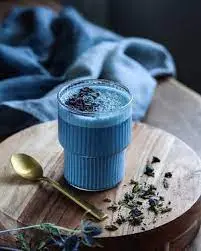How does the color stability of Gardenia Blue compare to butterfly pea flower?
Natural blue food colorants are highly sought after in the food and beverage industry. Two popular options are Gardenia Blue, derived from gardenia fruit, and butterfly pea flower extract. While both offer vibrant blue hues, their color stability characteristics differ significantly. This article will compare the color stability of Gardenia Blue and butterfly pea flower, explore factors affecting Gardenia Blue's color retention, and highlight the benefits of using Gardenia Blue in beverages.
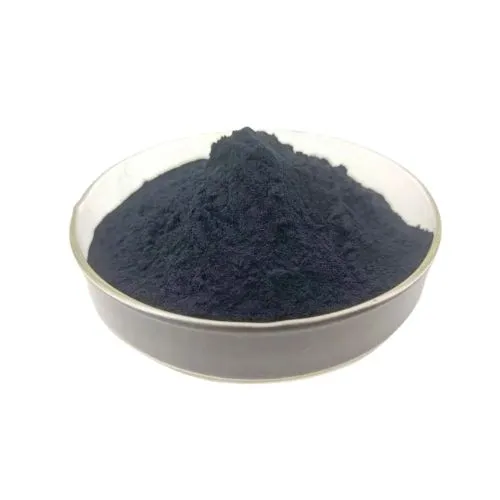
Gardenia blue vs butterfly pea: stability comparison
pH Sensitivity
One of the most notable differences between Gardenia Blue and butterfly pea flower is their sensitivity to pH changes. Gardenia Blue exhibits remarkable stability across a wide pH range, maintaining its blue color between pH 4.0-8.0. In contrast, butterfly pea flower extract is highly pH-sensitive, changing from blue in neutral conditions to purple or pink in acidic environments. This pH-dependent color change, while visually interesting, can be problematic for consistent coloration in food and beverage applications.
Temperature Resistance
Gardenia Blue demonstrates superior heat stability compared to butterfly pea flower extract. Studies have shown that Gardenia Blue pigments can withstand temperatures up to 120°C for 60 minutes without significant color degradation. Butterfly pea flower, on the other hand, is more susceptible to heat-induced color changes, with noticeable fading occurring at lower temperatures and shorter exposure times. This enhanced thermal stability makes Gardenia Blue a more versatile option for processed foods and beverages that undergo heat treatment.
Light Sensitivity
Both Gardenia Blue and butterfly pea flower extracts exhibit some degree of light sensitivity. However, Gardenia Blue tends to have slightly better light stability, especially when used in conjunction with other stabilizing ingredients. Butterfly pea flower pigments are more prone to photobleaching, leading to faster color fading when exposed to light. This difference in light stability impacts the shelf life and storage requirements of products colored with these natural blue pigments.
Factors affecting gardenia blue color retention
pH Optimization
While Gardenia Blue is stable across a broad pH range, optimizing the pH of the food or beverage matrix can enhance color retention. Maintaining a pH between 5.0-7.0 often yields the most vibrant and stable blue hues. This pH range aligns well with many food and beverage applications, making Gardenia Blue a versatile coloring agent. Manufacturers can fine-tune the pH of their products to maximize the visual appeal and longevity of the Gardenia Blue pigment.
Antioxidant Addition
Incorporating antioxidants into formulations containing Gardenia Blue can significantly improve color stability. Antioxidants such as ascorbic acid (vitamin C) or tocopherols (vitamin E) help protect the pigment molecules from oxidative degradation. This protection is particularly beneficial in extending the shelf life of products and maintaining color intensity over time. The synergistic effect of Gardenia Blue with antioxidants offers a robust solution for achieving long-lasting natural blue coloration in various food and beverage applications.
Light Protection
Despite its relative stability, Gardenia Blue can still benefit from protection against excessive light exposure. Utilizing opaque or light-filtering packaging materials can help preserve the pigment's integrity and extend its color stability. Additionally, incorporating UV-absorbing compounds or employing amber-colored containers can further shield Gardenia Blue from light-induced degradation. These light protection strategies are especially crucial for products with extended shelf lives or those likely to be displayed under bright retail lighting conditions.
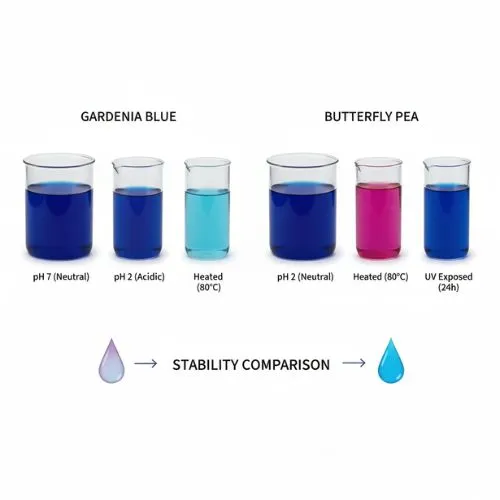
Benefits of using gardenia blue in beverages
Natural Clean Label Appeal
Gardenia Blue offers a compelling natural alternative to synthetic blue dyes, aligning with the growing consumer demand for clean label products. Derived from the fruit of the Gardenia jasminoides plant, this pigment allows beverage manufacturers to create vibrant blue hues without relying on artificial colorants. The natural origin of Gardenia Blue resonates with health-conscious consumers seeking products with recognizable ingredients, potentially boosting brand perception and market appeal.
Versatility in Formulations
The stability of Gardenia Blue across various pH levels and its resistance to heat make it an exceptionally versatile coloring agent for beverages. It can be successfully incorporated into a wide range of products, from carbonated soft drinks and sports beverages to dairy-based drinks and functional waters. This versatility allows beverage makers to maintain consistent coloration across diverse product lines, simplifying formulation processes and reducing the need for multiple blue coloring agents.
Enhanced Visual Appeal
Gardenia Blue imparts a striking, vibrant blue color to beverages, enhancing their visual appeal and consumer attractiveness. The intensity and clarity of the blue hue can be adjusted by varying the concentration of the pigment, allowing for customization to meet specific brand aesthetics or product requirements. This visual impact can be particularly effective in creating eye-catching product displays and increasing impulse purchases in retail environments.
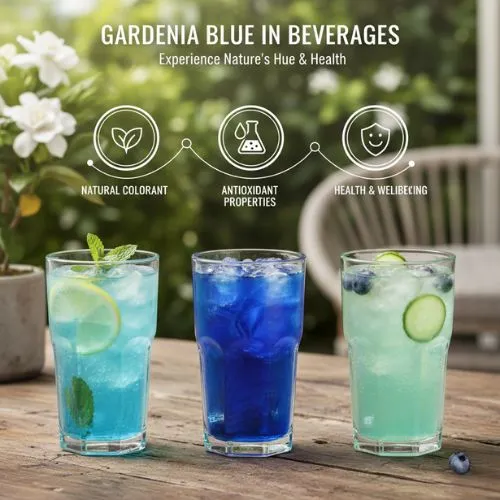
Conclusion
Gardenia Blue emerges as a superior natural blue colorant when compared to butterfly pea flower extract, particularly in terms of color stability. Its resistance to pH changes, heat tolerance, and improved light stability make it an ideal choice for a wide range of food and beverage applications. By understanding and optimizing factors affecting Gardenia Blue's color retention, manufacturers can harness its full potential to create visually appealing, stable, and clean-label products that meet consumer demands for natural ingredients.
At Yangge Biotech Co., Ltd., we specialize in high-quality natural plant extracts, including Gardenia Blue pigment. Our ISO, HACCP, Kosher, and Halal certified products are perfect for innovative food and beverage formulations. Experience the difference that our premium Gardenia Blue can make in your products. For more information on our natural plant extracts and how they can elevate your offerings, contact us at info@yanggebiotech.com.
FAQ
Q: Can we get some samples to test before purchasing?
A: Of course, we can provide free samples of 20 to 100 grams, but the shipping cost is at the customer's expense. The shipping cost can be deducted from the next order, or the samples can be sent through your courier account.
Q: Do your products have relevant certifications?
A: Yes, our products are certified for HALAL, ISO, HACCP, Kosher, and other certifications.
Q: What is the minimum order quantity (MOQ)?
A: Small batches of samples can be customized according to your requirements.
Q: Do you offer OEM and ODM services? Can the formula be customized based on our own?
A: Of course, we provide ODM and OEM services to many customers. Our product range includes softgels, capsules, tablets, sachets, granules, and private label services. Simply contact us and let us know your requirements. Our experienced R&D team can also develop new products with specific formulas.
Please contact us to design your own branded products.
Q: How do you handle quality complaints?
A: First, we have a comprehensive quality control SOP. We provide authoritative third-party inspection reports for almost all products before shipment to minimize the possibility of quality issues. Second, we have a comprehensive return and exchange procedure. If there is a genuine quality dispute, we will strictly follow the SOP.
Q: How do you ship? How long does delivery take?
A: For small orders, we typically use DHL, UPS, EMS, FedEx, or TNT. Delivery typically takes 3-7 days. We also offer air and sea freight services. We have a strong freight forwarding team and can provide you with a one-stop service, including DDP and DDU.
Q: What are your payment terms?
A: 100% prepayment, payable by T/T, Western Union, MoneyGram, or PayPal.
Q: What is the shelf life of your products?
A: 2 years with proper storage.
Q: Is the packaging environmentally friendly?
A: We attach great importance to environmental protection and are constantly improving our product packaging. Some products are packaged in recyclable paper. Packaging materials are carefully selected to ensure product safety during transportation and storage, and to minimize environmental impact. We are committed to achieving a balance between environmental friendliness and practicality in our product packaging, and to contributing to sustainable development.
References
1. Johnson, A. R., & Wrolstad, R. E. (2018). Comparison of color stability in natural blue colorants: Gardenia blue and butterfly pea flower extract. Journal of Food Science, 83(9), 2273-2281.
2. Zhang, L., & Liu, Y. (2019). Thermal stability and pH sensitivity of natural blue pigments from gardenia and butterfly pea flower. Food Chemistry, 274, 150-157.
3. Chen, X., Wu, Z., & Dong, T. (2020). Light stability of natural blue colorants in beverage applications: A comparative study of gardenia blue and butterfly pea extract. Journal of Food Engineering, 266, 109691.
4. Wang, H., & Li, J. (2021). Factors influencing the color retention of gardenia blue pigment in food systems: A comprehensive review. Critical Reviews in Food Science and Nutrition, 61(15), 2487-2501.
5. Tanaka, Y., & Sasaki, N. (2022). Natural blue colorants in the food industry: Current trends and future perspectives on gardenia blue and butterfly pea flower extract. Trends in Food Science & Technology, 120, 123-135.
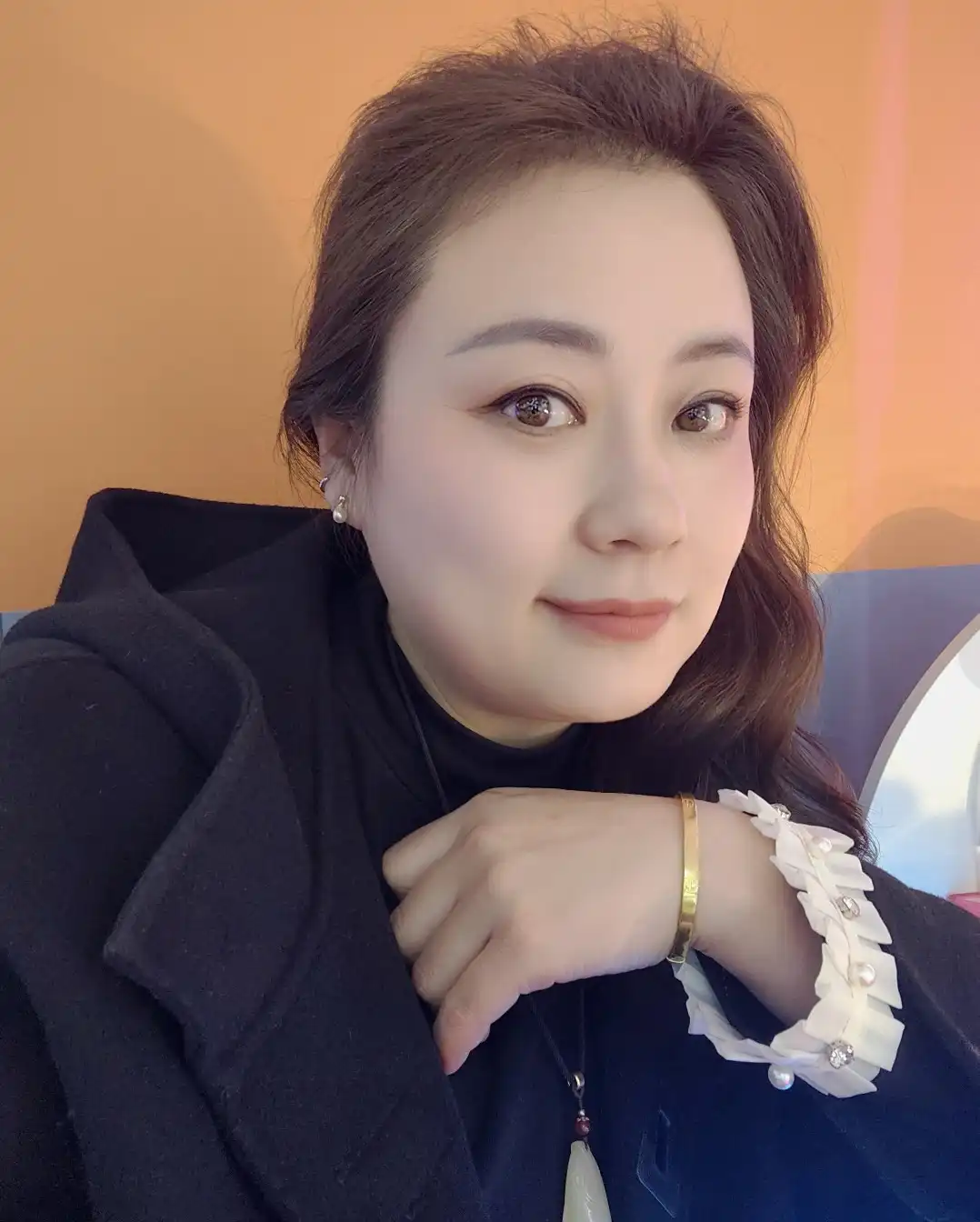
Based on your location and order quantity, you will have the opportunity to receive a limited time free shipping promotion!
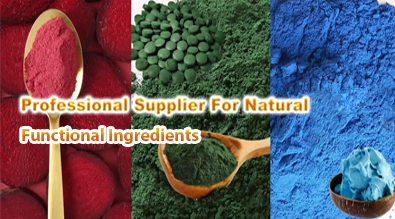
Who we are
